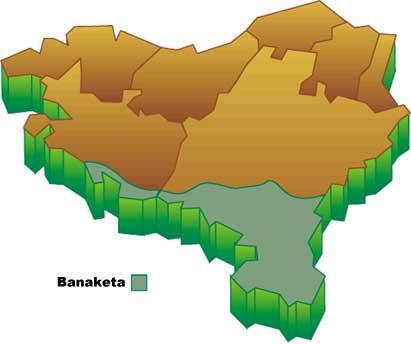Under the sunburned earth, spur toad
With the hope of the sun we have gone to the Ribera de Navarra and, of course, the storm has caught us at night in the surroundings of the Bardenas. However, we are glad to think that this type of rain will clean the car. He realizes that he is stopping my friend by surprise. “Do you see that?” On the same track, the frog or the planting of animals in question is making poteca. Amazing! Right now we tell you! Take the umbrella and with the front light on we leave the car. They look like toads. Pocholos and something small less than 9 cm. They are grayish and have dark green scars. The bottom is also gray or cream. They are soft skin, with wide head and vertical pupil. Short and robust legs, with a dark bulge on the back. There is no doubt that they are sprawling toads. Come on, it's not an environment here.

On the way home there is only one thing in mind. That dry land, calcined and cracked by the Sun at noon, had no way of being an ideal place for amphibians. From where, then, will he go along with the rain? How can these toads be molded in a “desert” like the Bardenas to combat dehydration? Just take a good manual and read it.

The spur toads are amuros perfectly adapted to dry areas and usually appear in different habitats, from marshes and sandy to steppes and dry areas. They are stored during the day to prevent the sun from drying. In the same way, throughout the summer, by August, adults can enter temporarily underground and in red winter when the temperature drops. They are the typical amphibians of the arid areas of the south of the Basque Country. They inhabit wetlands such as El Pulguer, Pitillas, La Estanquilla and Agua Salada, among others, in the vicinity of the Ebro River and, as already indicated, can be found in the vicinity of the Bardenas.
It seems that the 500 mm islet marks the northern boundary of the distribution and, as it has been drawn on the map, from there they hardly appear. In the south, however, this species is common in France and especially in the south of the Iberian Peninsula.
The species is adapted to huge demographic oscillations. In fact, having to live in such dry places and reproduce in the water, the population can suffer great declines depending on the time. In the years when there is no water, or when after laying the wells dry, they do not reproduce and can become almost invisible for a few years. When time goes on, large quantities appear again. That is why, in the south of the peninsula, they have been seen in a huge density, up to 120 units per square meter!

The spur that gives it its name and helps to identify itself is a black metatarsal tuber on the hind legs and with a horn hardness, an excellent induction tool in sandy and loose soils. As has been said, while the weather is not very humid, the day usually passes hidden in the freshness of the subsoil. Alternately move the burial legs and thanks to the spur you can quickly build a gallery of 10-40 cm or more. Nothing darker, however, goes out to eat the invertebrates that form your diet, especially the coleoptera, orthoptera, hemipteros and arachnids. It captures them rececho and adopts a special attitude: to have a wider view, it lengthens the front legs, putting them upright. Also, large eyes have excellent instruments of nocturnal observation and are very curious: they have a vertical abocinated pupil and a golden or silver iris. Despite being a hunter of dark, it has sometimes been seen around wells with light, attracted by the bugs collected there.
In mid-February, they exhuman and go to wetlands to reproduce, unless weather conditions prevent it. In this tenor both males and females have a darker color than normal. However, males, in addition to being smaller, at this time the inflammation of the glands makes them appear thicker arms, which allow differentiating them. The male courtship song is given under water, so you barely hear it and it looks like a silent chicken hook: “by CO.” When the player approaches, the male holds the front arms along the front of the back legs, taking a position called the amplexus.

The female of Zihurtar to the new generation puts from April long egg yolks (up to almost 7,000 eggs) and as the male becomes fruitful. Eggs are stuck in the stems of aquatic plants or simply on the bottom of the wetland. Between 5 and 15 days later, the dark grey larvae of 3,5-4,5 mm are hatched, which in a few hours will double their size and weight. Toad larvae with spur of more than 10 cm (sometimes 15 cm!) We have one of the best desserts in Europe. These larvae feed on algae and phanerogams, as well as bacteria, small invertebrates and massacres. They can withstand high levels of pollution and salinity, avoiding competition from more sensitive species. Four months after their integration, July or September, they suffer from metamorphosis. Once the body has been greatly reduced, these large tadpoles become small toads of about 22-35 mm.
As for the status of populations, it is considered that in many counties it has been reduced. Like many wetland animals, spur toads have suffered from drying, dredging, road catches or eutrophication of wells. If all this were not enough, it seems that in our territory there is another danger. In order to practice fishing, in wetlands there is the habit of carrying fish from one side to the other and, in addition to cyprinids, in some places species such as eel, perch and pike have been released. These are great predators that seem to have killed many larvae and eggs.
Spur Species: Pelobates culesFamily: |





